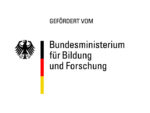Öladsorbierende Vliesstoffe
Environmentally friendly oil-absorbent nonwovens made from functionalized man-made fibers
The use of oil binding agents ranges from private household applications to professional use in trade and commerce to accidents and catastrophes caused by accidents. Particularly in the case of accidents on bodies of water, large quantities of oil usually have to be removed quickly and their spread prevented.
Nonwovens are predestined for use as textile oil absorbers. The project objective was to control the surface properties of industrially produced biobased man-made fibers so that opposing wetting properties of the fabrics with oils and water can be achieved. In addition, the fibers used – in contrast to industrially produced fibers used up to now – should not contribute to increasing the undesirable and hazardous plastic content in water. Viscose and polylactic acid (PLA) fibers are suitable biobased man-made fibers, as both are available on a large scale. The main challenge was to test the suitability of the intrinsically water-absorbing hydrophilic viscose fibers for the targeted applications. In addition, the surface properties of the PLA fibers were compared with those of benchmark polypropylene (PP) fibers.
The development of novel nonwovens was realized in the STFI pilot plant. For this purpose, different nonwoven structures were developed from standard fibers and from functionalized fibers. With the help of different fiber finenesses and the variation of basis weights and material thicknesses to optimize the nonwoven density, it was possible to develop reliably absorbent materials.
The project results show that viscose nonwovens have very good capacities for oil absorption. However, absorption is significantly reduced as soon as the fibers are wetted by water. As a result, even oil that has already been absorbed can be displaced from the textile again. By varying the proportion of hydrophobic and hydrophilic fibers in the nonwoven, oil uptake from an oil-water mixture can be specifically controlled.
An alternative approach was confirmed using the demonstrators – PLA pillows filled with viscose flakes. A hydrophobic boundary layer can be built up through the PLA shell, allowing selective oil uptake as well as recovery of oil by e.g. centrifugation processes. The tests showed promising results and offer numerous possibilities for further optimization depending on the respective applications.
Project Information:
Title (German): Umweltverträgliche Ölabsorptionsvliesstoffe aus funktionalisierten Man-Made- Fasern
Acronym: Öladsorbierende Vliesstoffe
Project number: 20130 BG
Project duration: 01.12.2018 – 31.05.2021
Project Partner: Sächsische Textilforschungsinstitut (STFI), Chemnitz
Contact DTNW: Dr. Habil. Larisa Tsarkova, Tel.: +49-2151-843-2016, e-mail: tsarkova@dtnw.de
Weitere Informationen zum Download:





